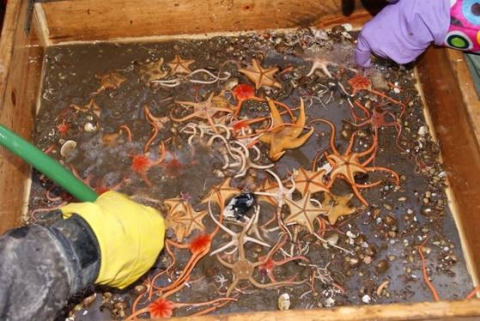
Dietary tracers in Bathyarca glacialis from contrasting trophic regions in the Canadian Arctic
Blandine Gaillard, Tarik Meziane, Réjean Tremblay, Philippe Archambault, Kara K. S. Layton, André L. Martel, Frédéric Olivier. Marine Ecology Progress Series, Vol. 536: 175-186, 2015. doi: 10.3354/meps11424
This paper published in MEPS results from collaboration between French and Canadian scientists of the UMR 7208 BOREA, the UQAR/ISMER and the Canadian Museum of Nature on arctic researches. We used fatty acid trophic markers (FATMs) to assess alimentation sources of the bivalve Bathyarca glacialis and describe the pelagic–benthic coupling in the Canadian Arctic Archipelago.
Our results suggest that B. glacialis is a non-selective filter feeder, feeding on microalgae, zooplankton, and bacteria. Diet varied between coastal (mainly microalgae) and bathyal populations (increased contribution of zooplankton and bacteria) in response to local and seasonal environmental conditions (bathymetry and trophic environment).
Furthermore, we found nonmethylene-interrupted (NMI) fatty acids in the polar lipids of B. glacialis, which could be produced de novo when access to essential fatty acids (EFAs), required for maintaining membrane structure and function, is limited.
This bivalve species thus has certain attributes that could help it to cope with expected strong modifications in primary production dynamics due to climate-induced changes in the Arctic marine system.
Contact BOREA : Tarik Méziane

